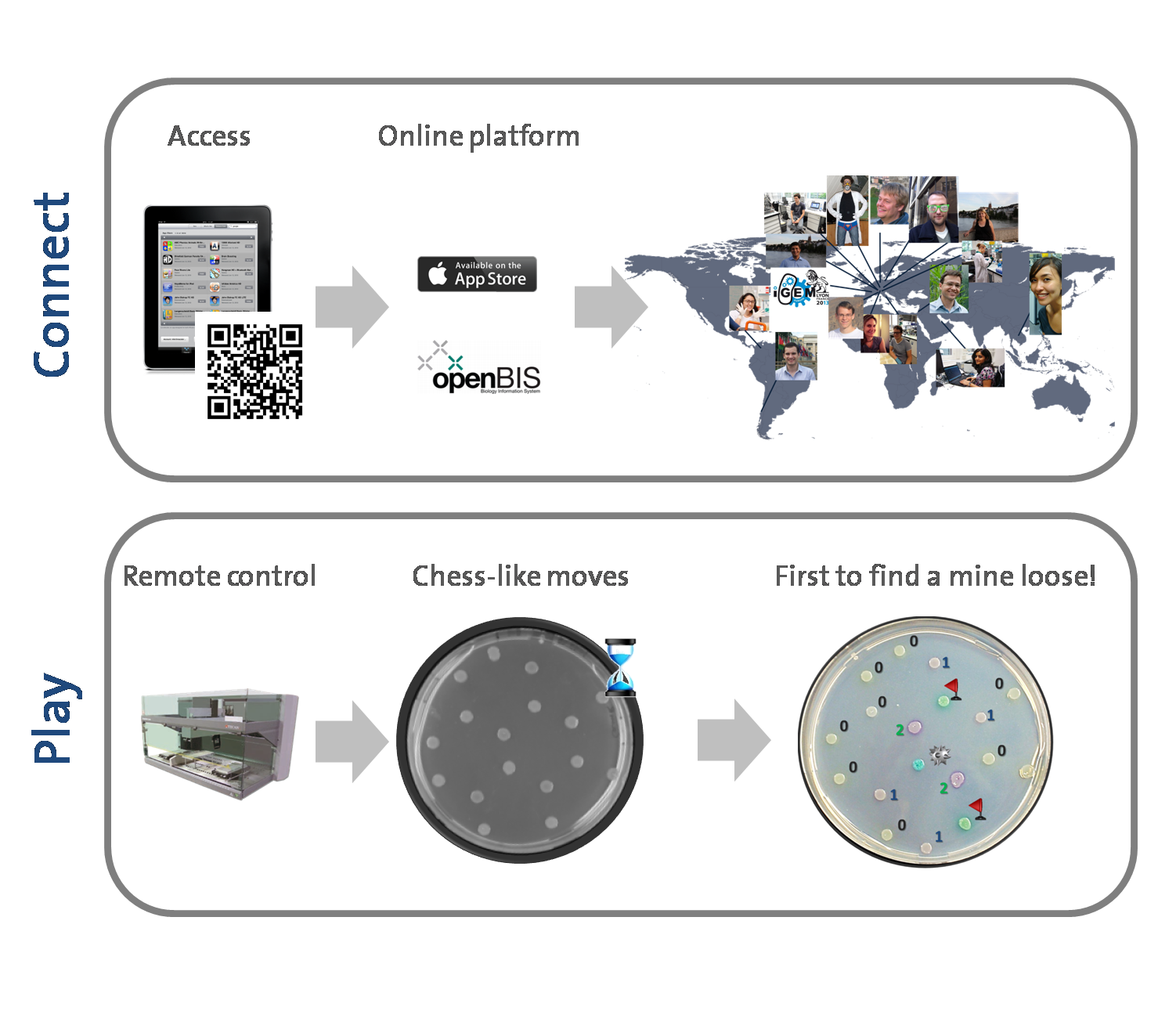Team:ETH Zurich/World
From 2013.igem.org
| Line 14: | Line 14: | ||
srcMP4=<html>https://static.igem.org/mediawiki/2013/e/eb/HumanpracticevideoConverted.mp4</html>}}<br><br> | srcMP4=<html>https://static.igem.org/mediawiki/2013/e/eb/HumanpracticevideoConverted.mp4</html>}}<br><br> | ||
<h1> Educational expansion </h1> | <h1> Educational expansion </h1> | ||
| - | <p align="justify"> Through our global web-based platform, we extend the possibility of a player to participate in the design process of the Colisweeper circuit. As our circuit involves a sender-receiver module, different combinations of promoters and hydrolases can be chosen by the player. From a displayed chart of indexed sender modules and receiver modules, a certain combination will yield a specific output. Through a use-friendly modeling interface, a | + | <p align="justify"> Through our global web-based platform, we extend the possibility of a player to participate in the design process of the Colisweeper circuit. As our circuit involves a sender-receiver module, different combinations of promoters and hydrolases can be chosen by the player. From a displayed chart of indexed sender modules and receiver modules, a certain combination will yield a specific output. Through a use-friendly modeling interface, a defined set of reactions systems are specified for a selected sender-receiver circuit. The feasibility of the circuit in terms of time scales, visible and compatible outputs could be checked. Parameters and the modularity of the system could be explored. This would add a large educational value completely in agreement with the "plug-and-play" idea of gamification.</p> |
[[File:YourColisweeper.png|500px|center|thumb|<b>Figure 2: Possible plug and play combinations. </b>]] | [[File:YourColisweeper.png|500px|center|thumb|<b>Figure 2: Possible plug and play combinations. </b>]] | ||
Revision as of 03:20, 5 October 2013
Colisweeper as a worldwide interaction platform
We believe that Colisweeper is an original and novel tool that can be employed to raise awareness and educate people about synthetic biology. We envision an application with which people from all over the globe can remotely interact to participate in a multi-player game. Using a global web-based platform, accessible via a smart phone application that can be downloaded, people can remotely connect with other people miles away. At the department of Biosystems Science and Engineering, ETH-Zurich in Basel, we have a platform called openBIS. OpenBIS is an Open Source Biology Information System whose purpose is the management, annotation and sharing of data measured in biological experiments. We plan to create a QR Code to access our website and application for smartphones and tablets to connect to the [http://www.cisd.ethz.ch/software/openBIS openBIS] platform. Using OpenBIS, global players can connect to a cloning robot at our department via remote control. Once connection is established, our bio-game colisweeper can be played with multiple players across the world. The game grid can be viewed by the players with each position of the colony in the grid represented by an alpha-numeric code. The player chooses a code after which the robot makes the move (watch the video for the robot in action). Alternatively, the opponent player makes a move. The player that encounters the mine colony first loses the game.
This opens huge possibilities not only for single persons, but also for big events and presentation since the camera records can be presented on any scale. Furthermore we think of this as a priming idea for others to catch on to, take part and develop it further into all kinds of applications, ranging from entertainment to education and even marketing or instruction.
Educational expansion
Through our global web-based platform, we extend the possibility of a player to participate in the design process of the Colisweeper circuit. As our circuit involves a sender-receiver module, different combinations of promoters and hydrolases can be chosen by the player. From a displayed chart of indexed sender modules and receiver modules, a certain combination will yield a specific output. Through a use-friendly modeling interface, a defined set of reactions systems are specified for a selected sender-receiver circuit. The feasibility of the circuit in terms of time scales, visible and compatible outputs could be checked. Parameters and the modularity of the system could be explored. This would add a large educational value completely in agreement with the "plug-and-play" idea of gamification.
 "
"







